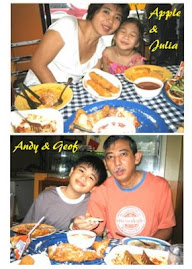
- THE CHAPMAN REPORT (1962) is a fictional story of intrigue, dishonesty and relationships between men and women as chronicled in a study of female sex habits.
- THE MAN (1964) is a very provocative novel about the 1st Black US president who fights for his office, race and private life and faced with an impeachment by the Senate of the United Sates. This novel is relevant and timely today with Barrack Obama now as the 1st Black US President – will he be impeached in the future? Very informative. You get to know the impeachment process in the US.
- THE WORD (1972) tells of a gospel, ostensibly written by Jesus' brother, which was discovered. The story combines this religious theme with international business and politics.
- THE FAN CLUB (1974) was about Hollywood's sexiest star who is kidnapped by four men. A lof of sex and violence. For mature readers only!
- THE PIGEON PROJECT (1979) explored the idea of the elixir of life and what happens if it were invented. Fast paced action dealing with a reelvant issue - ethics in science.
- THE ALMIGHTY (1982) was set in the media world, in which the head of the New York Record uses terrorism and espionage to exceed the circulation of the New York Times. Recommended for the mass media practioners (print, tv & radio) who sometimes sacrifice ethics just to sensationalize their news and shows.
- THE MIRACLE (1984) explored how the lives of different people were affected by the promise of a miracle of Mary’s apparition based on the story of Bernadette, the young peasant girl who first saw Mary at the Grotto in Lourdes in 1958. A story of faith.
- THE SEVENTH SECRET (1985) explores the possibility that Adolf Hitler and Eva Braun did not commit suicide in 1945, but rather survived to perpetuate the Third Reich into modern times. Intriguing and historical in its presentation.
- THE GUEST OF HONOR (1989) is a political and love story between the US president and a lady president of a small island in the South China Sea.
I discovered other titles (both fiction and nonfiction) by Wallace at the website of fantastic fiction . If you want to know more about Irving Wallace, read a featured book - A Writer's Profile by John Lawrence at Google Book Search.
I tried to find Wallace’s books at bookstores but it seems they are not anymore available or you have to order them. I hope our bookstores – Fully Booked, Power Books or National Bookstore – will display and sell the novels of Irving Wallace. His novels' themes – sex, professional ethics, religion, politics, science, history - are relevant in the present times.








 When you visit Bangkok, it's hard not to notice the many Japanese restaurants and fast foods in the malls and shopping centers like MBK, Siam Paragon and Esplanade. According to our Filipino friend, Jerry (who works at a UN agency in Bangkok), this is because of the large population of Japanese living and working in the city. Authentic and reasonably priced Japanese restaurants really abound in Bangkok. In my latest visit this January 2009, Ronnie (my boss) and I visited the Esplanade mall near the Thailand Culture Center MRT station. It's a relatively new mall
When you visit Bangkok, it's hard not to notice the many Japanese restaurants and fast foods in the malls and shopping centers like MBK, Siam Paragon and Esplanade. According to our Filipino friend, Jerry (who works at a UN agency in Bangkok), this is because of the large population of Japanese living and working in the city. Authentic and reasonably priced Japanese restaurants really abound in Bangkok. In my latest visit this January 2009, Ronnie (my boss) and I visited the Esplanade mall near the Thailand Culture Center MRT station. It's a relatively new mall
















































